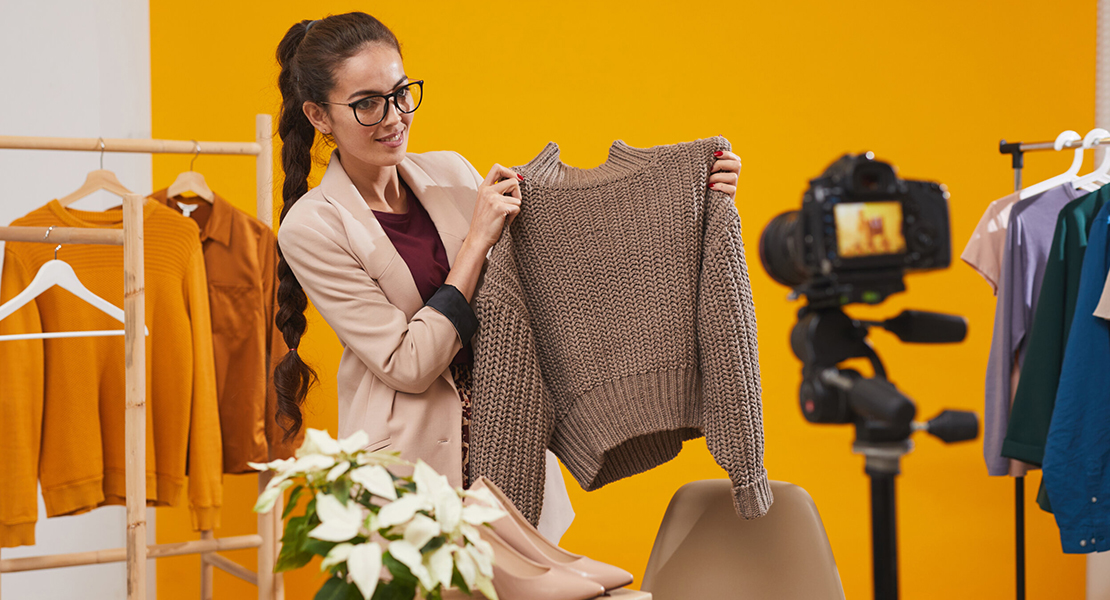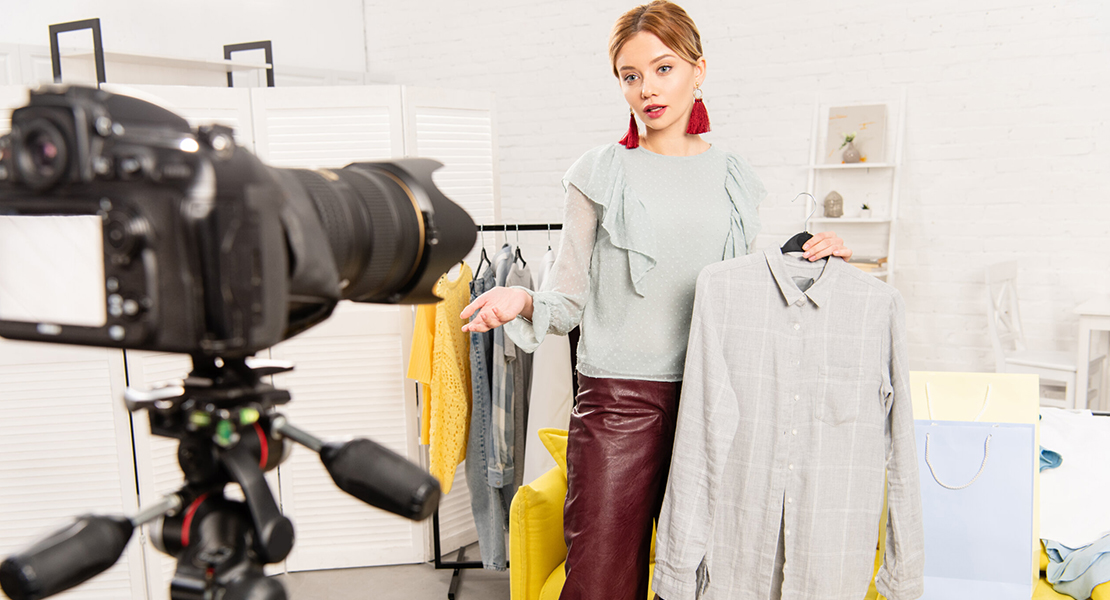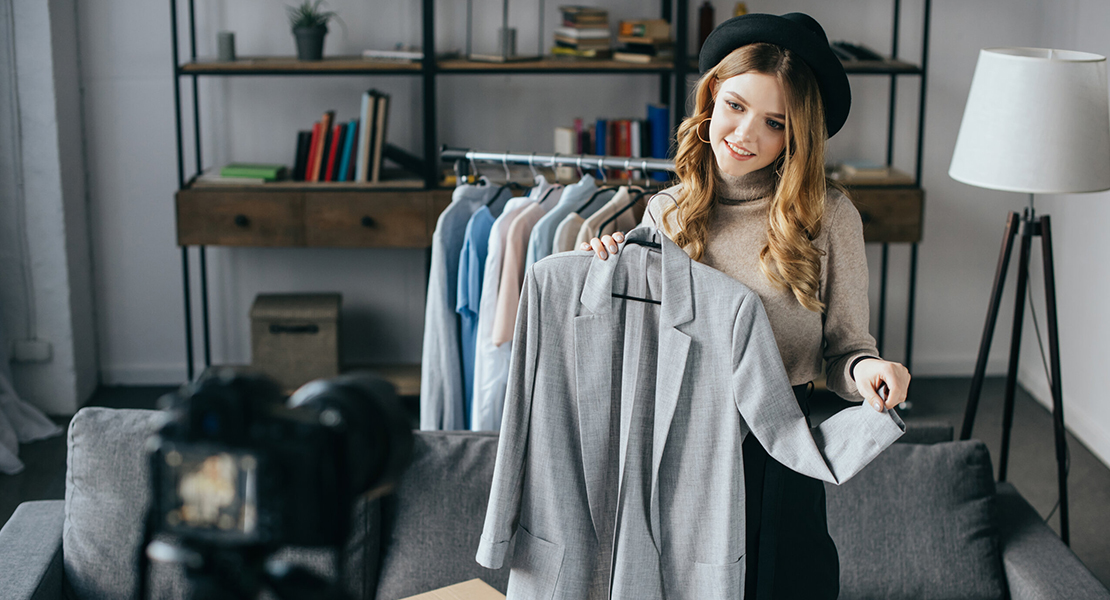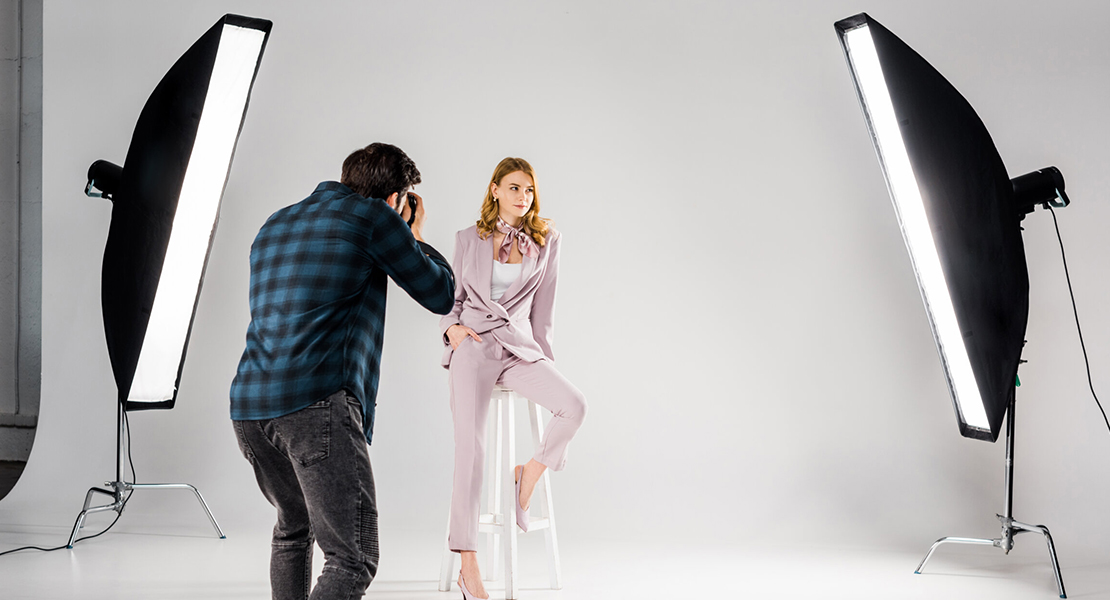
Your on-camera appearance plays a major role in how your message is received especially in a corporate video shoot. What you wear doesn’t just reflect your personal style; it can influence the audience’s trust, attention, and even comprehension. The wrong clothing can be distracting or send the wrong message, while the right wardrobe enhances your credibility and keeps the viewer focused on what really matters: your story.
In the professional video world, visuals carry just as much weight as spoken words. A well-prepared outfit can reinforce your brand image, boost your confidence, and help you feel at ease in front of the lens. But there are pitfalls to avoid like reflective surfaces, busy patterns, or uncomfortable fits that might look great in person but cause problems on camera. That’s why it’s essential to think strategically about every element of your wardrobe before stepping in front of a camera.
Beyond first impressions, your outfit affects how you perform and connect with viewers. Feeling uncomfortable in your clothes can impact your body language, energy, and delivery. Meanwhile, wearing something well-suited to your role and audience helps communicate authority, friendliness, or whatever tone your message requires.
This guide offers practical, no-nonsense tips for choosing camera-friendly clothing that helps you look sharp, feel confident, and avoid common mistakes. Whether you’re appearing in a company explainer, a team intro video, or an expert interview, these pointers will ensure you’re always dressed for success.
1. Avoid Busy Patterns Like Stripes and Checks
Clothing with stripes, checks, or small patterns might seem stylish off-camera, but on video, they can cause a distracting optical effect called moiré. This visual distortion appears as strange wavy lines that can confuse viewers and detract from your message. Solid colours or subtle textures are far more camera-friendly and keep attention where it belongs on you.
Busy patterns can also overwhelm a shot, especially in tightly framed interviews or presentations. These designs fight for attention with your face and gestures, making it harder for viewers to focus. Sticking to simple, elegant patterns or block colours creates a polished, professional impression without unnecessary distractions.
If you’re unsure whether a shirt will work on camera, do a quick test recording beforehand. Watching it back on the same type of screen your audience will use can help identify issues early. Being intentional about avoiding loud or flickering visuals ensures you come across clean, clear, and credible.
2. Choose Solid, Neutral Colours That Flatter Your Skin Tone

Wearing solid colours not only avoids moiré effects but also helps keep the frame clean and balanced. Neutral tones like navy, beige, burgundy, and forest green tend to look flattering on most people and adapt well to different lighting conditions. These hues help draw the viewer’s focus to your face without competing for attention.
Avoid overly bright neons or pure white, as they can either reflect too much light or wash you out under studio lighting. Soft, mid-tone colours are generally a safe and flattering choice. They also blend well with typical office or indoor environments, making them ideal for corporate settings.
If your brand has a colour palette, consider incorporating one of those tones into your outfit. This reinforces brand consistency while still allowing you to dress naturally. Just remember: the goal is to look approachable and confident not like you’re trying too hard.
3. Say No to Reflective Accessories and Shiny Fabrics
Jewellery, watches, buttons, or fabrics that reflect light can create hot spots in your video, drawing the eye away from your face. These reflections can be difficult to control, even with professional lighting setups. Keeping your outfit matte and non-reflective ensures a smoother visual result.
Shiny clothing like satin shirts or metallic-thread blazers can also catch the light in awkward ways. They may look glamorous in person but often produce unwanted glare or flickering effects on camera. Stick with cotton, wool blends, or matte synthetics that offer a crisp yet light-absorbing finish.
Even small details like metallic zippers or glasses frames can cause issues if they reflect studio lights. If you must wear glasses, opt for an anti-reflective coating to reduce bounce. Minimising reflections keeps the audience engaged with your message, not your wardrobe.
4. Dress Comfortably, But Not Casually

While you want to feel comfortable on camera, your outfit should still reflect a level of polish that aligns with your professional brand. Loose clothing or athleisure might feel great off-screen but can look unstructured or sloppy on video. Aim for outfits that offer comfort, structure, and a tailored appearance.
Garments that fit well help you maintain good posture, which improves both your confidence and on-screen presence. Tight clothing can make you look stiff or self-conscious, while overly baggy pieces can appear careless or overly casual. The key is striking a balance that makes you feel confident without looking underdressed.
For longer shoots, comfort becomes even more important. Choose breathable fabrics that allow you to move naturally and stay focused. The right clothing should support not distract from your ability to deliver a great performance.
5. Avoid Overly Branded or Distracting Logos
Unless your video is specifically promoting a product or brand, it’s best to steer clear of prominent logos and graphics. Logos can date your video quickly, especially if the company branding changes. Worse still, they may pull attention away from your message or create visual clutter.
Overly branded clothing can also confuse the viewer about your message or affiliations. If your audience isn’t familiar with the logo, it might prompt unnecessary curiosity or questions. Stick with plain, high-quality attire that reflects your professionalism and keeps the spotlight on you.
If you’re required to include a logo say, for a corporate shoot ensure it’s subtle, well-placed, and consistent with your visual branding. Minimalism often reads as confident and timeless on camera. Keeping branding subtle ensures clarity and professionalism in every frame.
6. Coordinate with the Background and Set Design
Before the shoot, it’s important to consider the visual environment in which you’ll be filmed. Wearing colours that clash with or perfectly match the backdrop can lead to blending in or becoming overly dominant in the frame. Ideally, your outfit should contrast tastefully with the background, helping you stand out without looking jarring.
If you’re being filmed against a green screen, avoid wearing green altogether, as it will cause parts of your outfit to disappear when effects are added. Similarly, white backgrounds can make light-coloured clothing look flat, while dark backdrops can swallow black outfits. Choosing mid-tone shades typically creates the right amount of visual separation.
Coordinating your look with the set helps create a balanced and harmonious composition. Check with the production team if you’re unsure about colours or location. A few thoughtful adjustments can make a huge difference in how professional and polished your video looks.
7. Mind Your Footwear, Even If It’s Off-Camera
Even if your feet won’t be in frame, the right shoes can influence how you stand, move, and feel. Wearing uncomfortable or unstable footwear can affect your posture and energy levels during filming. On the other hand, supportive shoes can help you stay grounded and confident.
For corporate shoots, polished shoes that match the tone of your outfit contribute to a full professional appearance especially in wide or walking shots. Avoid flashy colours, noisy heels, or overly casual footwear unless the video style calls for it. Neat, neutral footwear often goes unnoticed, which is exactly the point.
Feeling prepared down to your shoes gives you the kind of confidence that shows up on screen. Even if they never appear in the video, your footwear can play a subtle but powerful role in your performance. Dress fully, even when the camera doesn’t see it.
8. Avoid Wrinkled or Ill-Fitting Clothes
Creased clothing can ruin an otherwise polished look, catching unwanted shadows and making you appear unprepared. Iron or steam your outfit the night before or bring wrinkle-release spray if you’re shooting on location. This small step can make a huge visual difference on camera.
Fit is equally critical. Clothes that are too tight may restrict movement and reveal more than intended, while oversized garments can bunch awkwardly or look messy. Opt for clothes that drape neatly, flatter your body type, and stay put during movement.
A well-fitted, wrinkle-free outfit shows you respect both your audience and the production team. It subtly communicates readiness, confidence, and attention to detail. When your clothes sit well, the focus remains where it should be on your message.
9. Prepare a Backup Outfit Just in Case
Unexpected spills, weather changes, or lighting surprises can derail your on-camera look. Having a second, equally appropriate outfit on hand ensures you’re never caught off guard. It also offers flexibility if the director or stylist suggests a change.
Your backup doesn’t have to be flashy it just needs to meet the same on-camera standards of colour, fit, and professionalism. Think of it as insurance against the unpredictable nature of shoots. It also saves time and stress if anything goes wrong at the last minute.
Being prepared with wardrobe options makes you appear adaptable and professional. It demonstrates your commitment to quality and consideration for the crew’s time. A little foresight can prevent big delays.
10. Check How Your Outfit Looks Under Lights

What looks great in natural light might not hold up under studio lighting. Fabrics can become translucent, shiny, or overly textured when hit by strong lights, so always do a test if possible. Step in front of lights during setup to check how your outfit behaves on camera.
Some colours may bounce unwanted hues onto your skin, giving you an off-tone look in the final footage. Similarly, sheer fabrics may reveal undergarments under direct lighting. Wearing neutral or nude layers underneath can help avoid surprises.
Working with the lighting team to test your wardrobe under real conditions ensures a flawless result. It’s one of the simplest but most overlooked ways to avoid wardrobe regrets. Don’t wait for playback to realise your outfit isn’t working check it early.
11. Keep Jewellery Simple and Silent
Jewellery may add a touch of personality, but it can quickly become a distraction on camera. Flashy or reflective pieces can catch the light and draw attention away from your face, while large or dangling items may interfere with microphones. When in doubt, opt for minimal, matte-finish accessories that complement your outfit without stealing focus.
Noisy jewellery such as bangles or layered chains can create audio problems, especially if they jingle or knock against clothing. This can ruin a clean take and delay production while adjustments are made. Stick to small, silent pieces that stay in place throughout the shoot.
Simplicity in jewellery keeps the emphasis on your message rather than your outfit. You can still express style and professionalism with subtle details, but avoid anything that could cause visual or auditory distractions. Clean, classic accessories tend to work best on camera.
12. Watch Out for Visible Logos and Branding
Wearing clothing with visible brand logos can complicate your corporate video shoot. Not only can it distract viewers, but it may also introduce legal or licensing concerns especially if the brand is unrelated to your company. Keep the focus on your content, not on free advertising for someone else.
In branded videos, it’s often best to avoid all logos unless they’re part of your own corporate identity. Even subtle branding can become prominent under certain lighting or camera angles. Aim for plain clothing in solid colours or simple patterns to maintain a professional and neutral appearance.
Choosing unbranded attire allows your video to feel more timeless and versatile. It also keeps your message free from unintended associations. Clean visuals lead to a cleaner impression, making your communication feel more intentional and polished.
13. Stick to Medium Tones and Solid Colours
Neutral, medium-toned clothing tends to work best on camera because it flatters most skin tones and holds up well under different lighting conditions. Avoid overly bright colours that might cause glare or reflections, especially reds, neons, and whites. Likewise, all-black outfits can lose detail on darker sets and make you appear flat.
Solid colours are ideal for avoiding the moiré effect an optical illusion that causes wavy patterns on screen. Fine stripes and small checks are notorious for this issue, and they can be distracting for viewers. Solid blues, greys, or jewel tones often offer the perfect visual balance.
When choosing colours, consider both your personal look and the context of the video. Ask about the background and lighting setup in advance. With the right colour palette, your appearance will enhance rather than compete with the visual storytelling.
14. Match the Tone of the Content
Your outfit should reflect the tone and message of the video content. A serious thought-leadership piece may call for a suit or formal wear, while a casual team video might be better suited to smart-casual attire. Aligning your wardrobe with the theme helps reinforce credibility and relatability.
Wearing something too formal for a relaxed video or too casual for a formal one can send mixed messages. It’s important to project the right tone from the first frame, setting clear expectations for the audience. Think about what your viewers expect from someone in your role.
Dress codes aren’t just for in-person events they apply on camera, too. By coordinating your outfit with the tone of your message, you create cohesion between how you look and what you say. This helps your video feel more deliberate and engaging.
15. Prioritise Comfort Without Compromising Style
It’s essential to feel comfortable in what you’re wearing, especially during long filming sessions. Uncomfortable clothes can affect your mood, posture, and performance. Tight collars, itchy fabrics, or constrictive fits can quickly become distracting when the camera’s rolling.
That said, comfort shouldn’t come at the expense of polish. Choose soft, breathable fabrics in tailored silhouettes that allow for natural movement. Test your outfit in advance by sitting, standing, and gesturing as you would during filming.
Finding that balance between comfort and style helps you look your best without feeling restricted. A confident, relaxed presenter makes a much stronger impression on camera. The right outfit supports both your performance and your message.
Final Thoughts: Dressing for Camera Success
What you wear on camera plays a crucial role in shaping how your audience perceives both you and your message. Every detail from the fabric and colour choices to accessories should be selected thoughtfully to convey clarity and purpose. Dressing for a video shoot isn’t about standing out with flashy attire; it’s about projecting confidence, professionalism, and keeping distractions to a minimum.
Use this guide as a handy checklist for your upcoming shoot. Whether you’re filming an internal company update or delivering a brand message to the public, your outfit should enhance your presentation, not overshadow it. When you feel comfortable and your look matches the tone of your content, your authenticity and credibility will shine through naturally. If you want your entire production lighting, wardrobe, and more to come together seamlessly, reach out to us. We’re here to help elevate your video production to the next level. Remember, dressing well for the camera is just one piece of crafting visual content that truly resonates with your audience.

